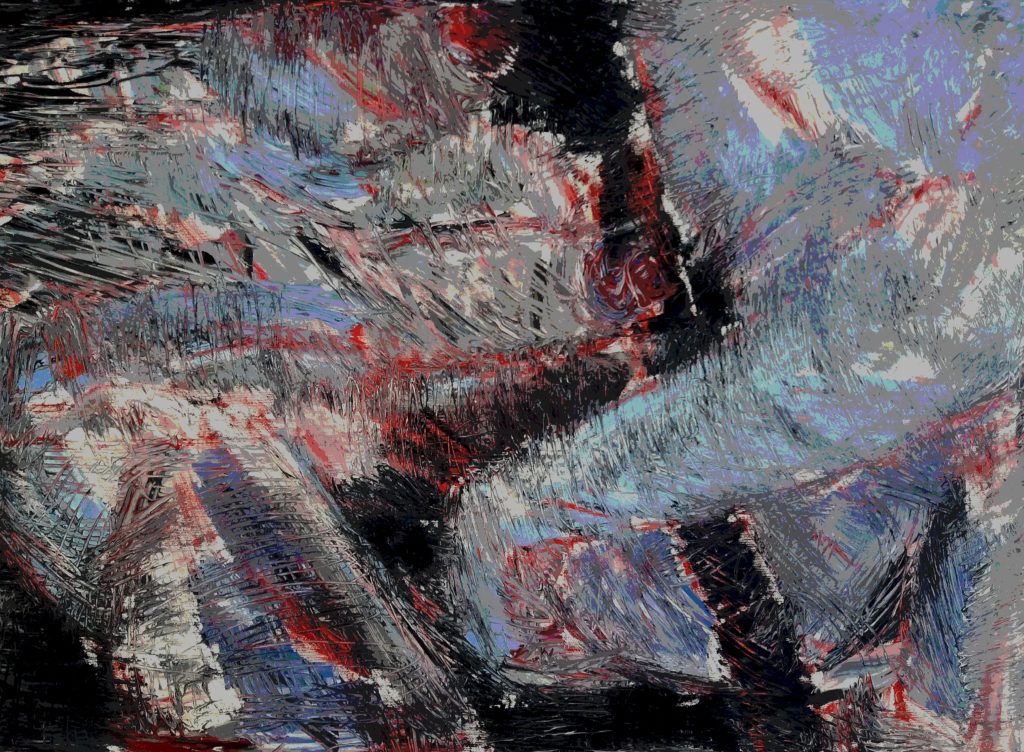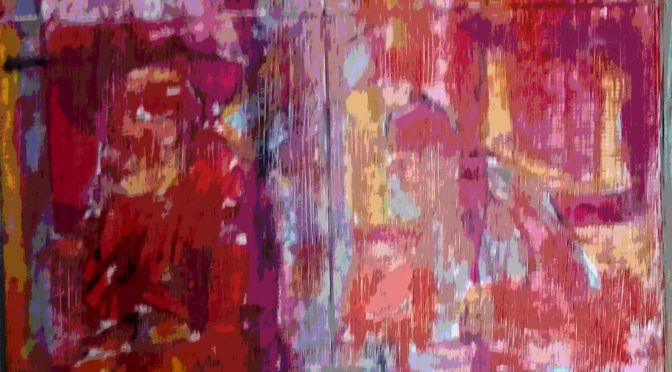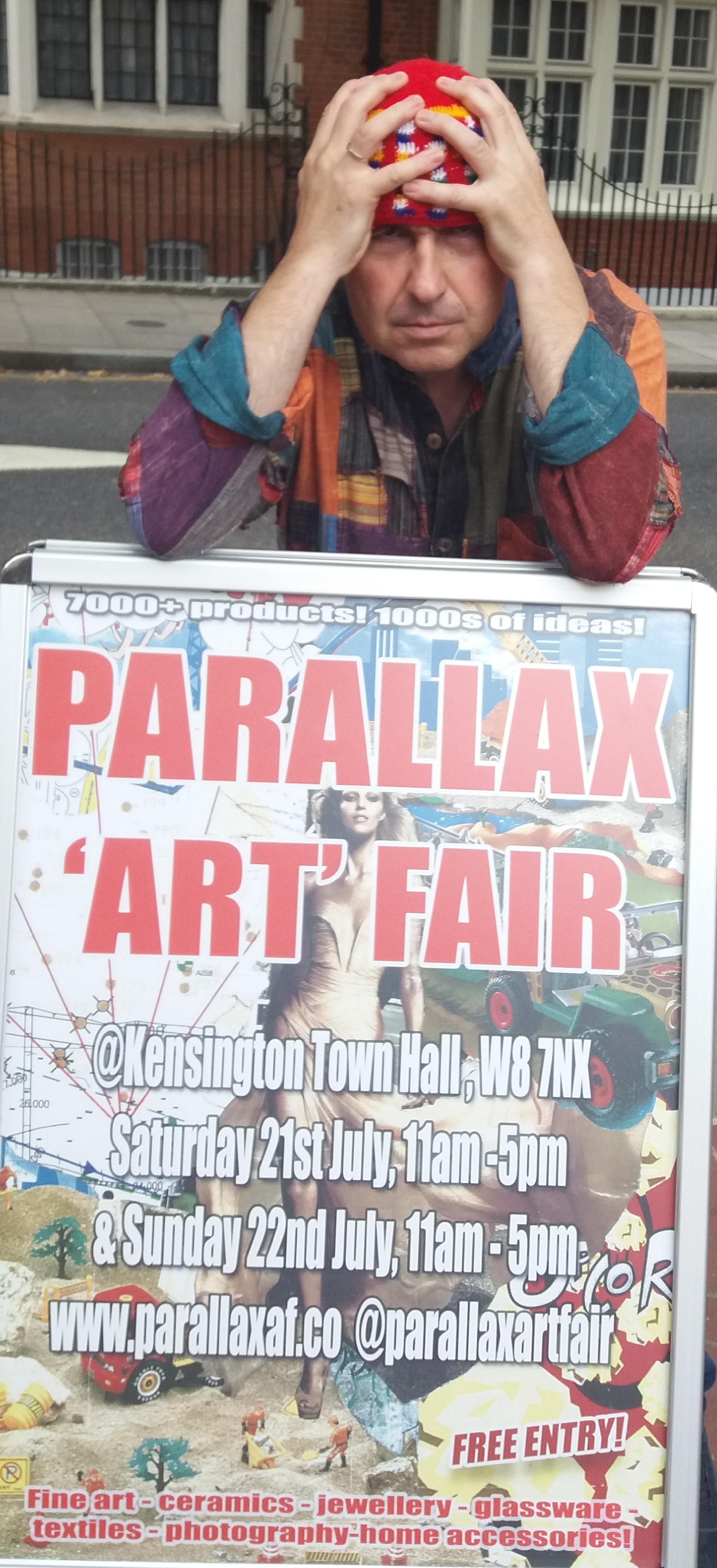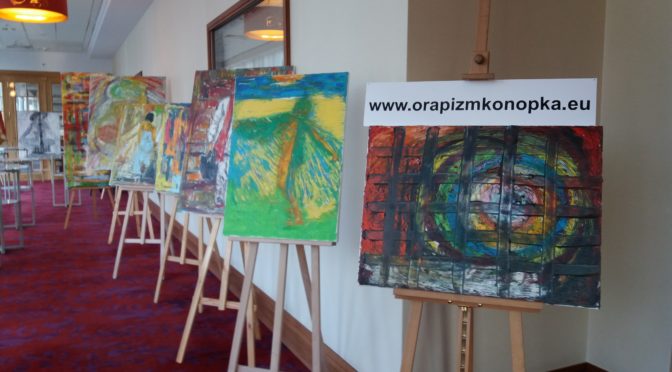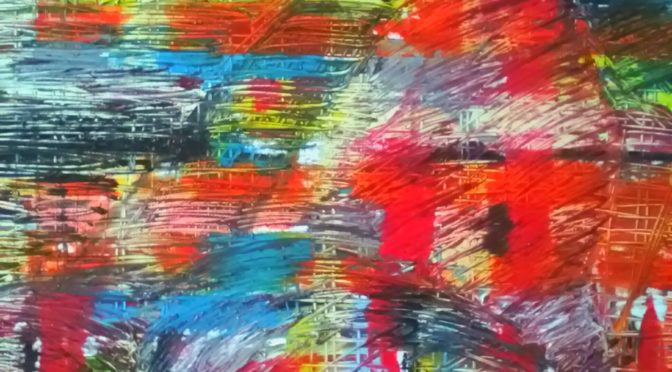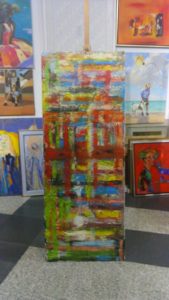The figuration hidden by Abstraction in the works of Krzysztof Konopka
Very often Abstract Art is a point of arrival of an impulsive act during which the artist frees withhelded and sometimes urgent emotions that he feels the need to imprint on the canvas; in other cases instead it is a releasing of serene, positive, intense sensations that only through the language of art can find voice. In the case of the artist protagonist of today the Informal is the starting point to deepen what is hidden behind it.
The meeting with the painting of Krzysztof Konopka, happens late, perhaps because he had to wait for the right moment in which the man could find the deepest contact with his own interiority, becoming a desire to free on canvas what he had become conscious after self-understanding; the spark was lited after having completed the journey of Santiago, when, after the return, he follows the instinct to buy canvases, brushes and colors to begin his personal and new journey, by bringing out of the chrysalis the artist hidden in the man. The polish Konopka is a self-taught artist, trying to narrate on canvas the deepest reflections, those that in everyday life is hard to hear because covered by the noise of routine, of the traffic, of the urgency of reaching goals that tend to detach the individual from his spirituality. Informal is at the same time main protagonist and minor character of a figurative that seems to hide, contrary to what happens in reality, seems to be placed in second place to the sensations that must instead emerge in a primary way. That’s why the atmosphere clothes and envelops the subjects of Konopka’s artworks and at the same time seems to dissolve them, as if the artist wanted to enter into their thoughts, their feelings, their overharing, communicating and telling them to the observer. So suffused is the figurative image as intense are the colors, and denses are the brushstrokes that crinkle and scratch the surface of the canvas, overlay the emotional chaos with the order of an image faithful to reality that remains however in the background because what really matters is the deep feeling. The result is a very particular, intense, Abstract Expressionism capable of attracting the glance of the observer to go and understand what or who is hiding under that emotional state, behind the scratches and the constant movement of those thoughts that seem to come out of the work itself to shout loudly their existence. In artwork Couple is particularly evident the link between the two, the deep sharing of the conception of life and dealing with their walk together, hand in hand, and Krzysztof Konpka illuminates the painting with light to tell the harmony, the serene lightness with which they seem to go towards their future. In She, instead, the atmosphere is more rarefied, more suffused, more tenuous, as if the protagonist needed to collect herself to become aware of her desires, her deepest emotions, a sense of nostalgia that can only emerge when she is alone, in communication with the deepest self; Konopka choses to paint her viewed from her back, revealing strong delicacy and sensitivity to a feeling that must be just whispered, which must leak lightly just because part of an intimate, reserved break. In the most hermetic paintings, those in which the image is not noticeable until after having stopped the glance a little longer, the channel of communication between the artist and the observer becomes the color, it is through the more or less dark or intense tones that Konopka reveals what there is beyond the emotional impact, drawing attention to an underskin of’the artwork that surprises because it lets you discover it slowly. In Wolf the chromatic range binds to the earth, to the mantle of the animal, and the sense of fear that usually inspires is somehow placated by the freeze frame almost reassuring in the moment in which the artist immortalizes him, as if in turn the wolf had stopped to reciprocate the attention that was receiving. Perhaps in this painting is hidden the tendency of Krzysztof Konopka to see nature around him as the best resource to rediscover spontaneity and the bond with his own interiority, in the knowledge that everything, even man, is part of a world to which too often he forgets to give due attention. They tell of movement, of evolution, of necessary passages in the life of each one to reach all of those changes,transformations, that leads to a deeper self-knowledge, a more balanced awareness of their emotions precisely because they are accepted and lived as necessary steps in the path of existence. Konopka likes to call Orapism his painting style, that means to connect with the rich inner world in the present moment, in the emotion of’now to communicate with greater clarity and conscience to those who observe his works. Polish by Piotrków Trybunalski, a small town near Łόdź, in its relatively short career, due to the late approach to painting, has been active in several important collective exhibition including the Four Seasons Art Fair in Amsterdam, the Pallax Art Fair in London, the international exhibition Single Work in Rome and in October 2019 will be among the artists of the International Biennale and Contemporary Art and Design in Florence.
Marta Lock
Marta Lock – novelist, aphorist, essayist, art critic, reviewer, sociopsycholog
KRZYSZTOF KONOPKA-CONTATTI
Email: orapizm@gmail.com
Sito web: http://www.orapizm.art/


